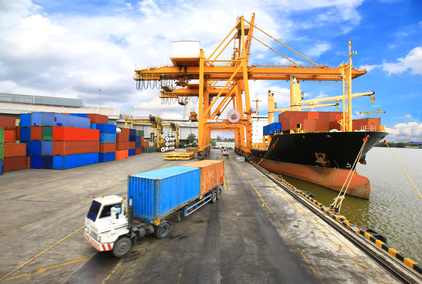Potential Marine Port Trucking Crisis
 Potential Marine Port Trucking Crisis
Potential Marine Port Trucking Crisis
Could there be a crisis in the North American port trucking industry? According to Phil Davies of Davies Transportation Consulting, there is. The recent strike taken by Vancouver port truckers could be just the tip of the iceberg, according to Davies. In fact, truckers engaged in a stoppage at ports in New York, New Jersey, Georgia, and Seattle.
One of the primary areas of concern has to do with the reduction of productivity across many North American container terminals. In markets with weak numbers, terminal operators are forced to bring their own labor costs under control. Obviously, the truckers will be the first to take a hit and that doesn’t sit well with that group.
Another issue appears to be time management. There are too many trucks sitting idle outside of terminals because of a rise in turn times (PDF report). Since truck owners are paid by the trip, anytime they are delayed because of terminal congestion, it costs them money. They want to get in and get out as quickly as possible.
In a recent report, Phil Davies points out various factors that can contribute to poor productivity in truck handling. These include the following:
- Large container ships: When larger container vessels become the focus of a terminal, congestion is created as resources are deployed for those kinds of ships; while others wait their turn.
- Restrictive union contracts: The average shift for a truck gate is 8 hours. Apparently, that’s only the situation in North America. Around the rest of the globe, you’ll find that gate operations are ongoing around the clock. One of the reasons that North American operations haven’t adopted this strategy is because of challenges with adapting long-shore collective agreements. At current contract rates, it becomes cost prohibitive to incur overtime. Ironically, this is what is contributing to those longer turn times which the truckers have an issue with.
- No proper incentives for efficiency: A lack of financial incentives at North American terminals means operators aren’t likely to go the “extra mile” to change the status quo. Down under, at Port Botany Australia, financial penalties that are tied to mandatory performance standards have actually dropped the turn times to 30 minutes or less. Compare that with the average 64 minute turn time at the Port of Vancouver and the 90 minute turn time at Los Angeles and you can see why those incentives could motivate better productivity.
Then there is the issue of the logistics service “blame game” to contend with. This crisis factor was highlighted in the Surface Transportation Annual Review 2014. This survey found that the warehouse distribution centers laid blame with the rail sector for delays. On the other side, the container sector found fault with the level of service delivered from drayage companies.
Clearly, these entities need to be brought to the table for a dialogue about how to improve the situation. None of these problems are insurmountable, as long as concessions are made and everyone keeps their eye on the big picture of improved productivity.

